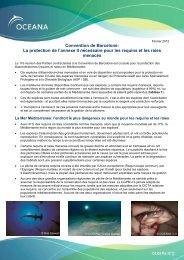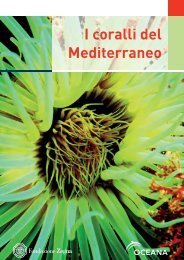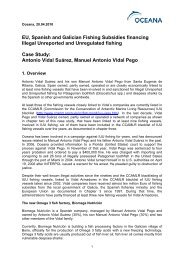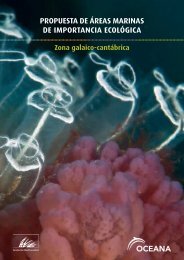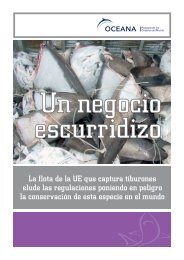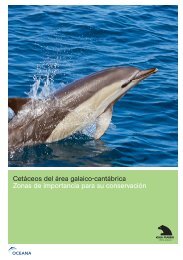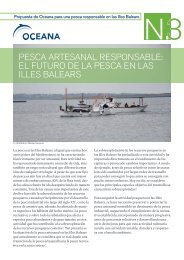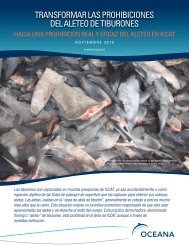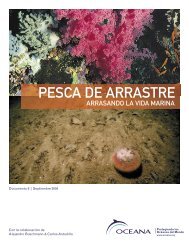Download - Oceana
Download - Oceana
Download - Oceana
Create successful ePaper yourself
Turn your PDF publications into a flip-book with our unique Google optimized e-Paper software.
Although OCEANA could not document these gardens made up only by Callogorgia verticillata in the<br />
maritime area of OSPAR, it is quite likely that they occur in Portuguese waters. Nevertheless and focusing<br />
only in the OSPAR area, mixed garden of Callogorgia verticillata and other gorgonian and sponge species<br />
have been recorded in the Gorringe Bank.<br />
DEPTH: 135 - 350 m<br />
TYPE OF SUBSTRATE: These gorgonian gardens grow on rocky substrate with a great variety of bottom<br />
types: non-sediment bedrock, bedrock covered by a lot of sediments, rocky slabs and stones on sandy<br />
bottom.<br />
4.4.1 Mixed garden of Callogorgia verticillata, Viminella flagellum, Tedania sp. and other<br />
demosponges<br />
DESCRIPTION: These mixed fields develop on the shallowest area of the bathymetric range of<br />
Callogorgia verticillata along with another species of predominant gorgonians such as Viminella flagellum<br />
and sponges such as Tedania sp. and other desmosponges not identified. Sea urchins (Centrostephanus<br />
longispinus) are also abundant, as well as shoals of Anthias anthias.<br />
DEPTH: 135 - 150 m<br />
TYPE OF SUBSTRATE: The species that make up this garden develop on rocky substrate, on a sandyrocky<br />
mixed bottom.<br />
Mixed gardens of Callogorgia verticillata, Viminella flagellum, Tedania sp. and other demosponges in the<br />
Gorringe bank (Portugal)<br />
36



